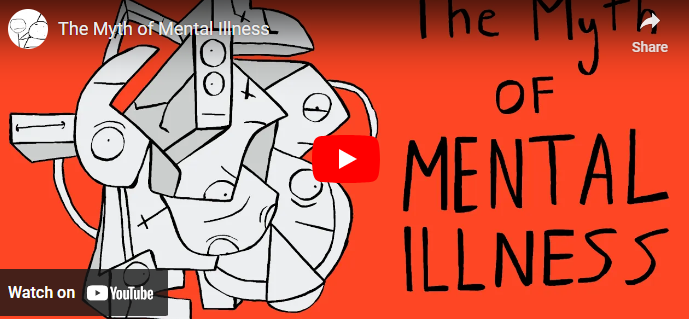
Contents
- 1 Mental Health in the White Community
- 2 The Stigma of Mental Health in the White Community
- 3 The Impact of Socio-Economic Factors on Mental Health in White Populations
- 4 Access to Mental Health Resources and Services for White Individuals
- 5 Strategies to Promote Mental Wellness and Resilience in the White Community
Mental Health in the White Community
The prevalence of mental health issues in the white community is a topic that requires careful examination and understanding. While mental health is a universal concern, certain factors specific to the white population can influence the prevalence of mental health issues within this community.
One of the contributing factors to the prevalence of mental health issues in the white community is the societal pressure to appear strong and resilient. White individuals often feel the need to maintain an image of success and perfection, which can lead to internalizing feelings of stress, anxiety, and depression. This pressure to conform to societal expectations can take a toll on mental well-being.
Moreover, cultural stigmas surrounding mental health in the white community can prevent individuals from seeking help and support. There is often a perception that admitting to mental health struggles is a sign of weakness, leading many white individuals to suffer in silence rather than reaching out for assistance. This reluctance to acknowledge and address mental health issues can exacerbate the prevalence of such problems within the community.
Socio-economic factors also play a significant role in determining the mental health outcomes of white individuals. Access to resources such as healthcare, therapy, and supportive communities can vary based on socio-economic status. Lower-income white individuals may face barriers to accessing mental health services, leading to untreated mental health issues and higher prevalence rates within this demographic.
Despite these challenges, it is essential to highlight the importance of promoting mental wellness and resilience in the white community. By normalizing conversations around mental health, reducing stigmas, and increasing access to resources, white individuals can be empowered to prioritize their mental well-being and seek help when needed.
Addressing the prevalence of mental health issues in the white community requires a multi-faceted approach that considers cultural, social, and economic factors. By raising awareness, reducing stigmas, and improving access to mental health resources, the white community can work towards better mental health outcomes for all individuals.
For more information on mental health resources and support, visit NAMI Helpline.
The Stigma of Mental Health in the White Community
Mental health has been a topic of increasing concern across various communities, including the white community. Despite growing awareness, stigmas and misconceptions still surround mental health in this population. Individuals of Caucasian descent may face unique challenges when it comes to acknowledging and addressing mental health issues due to deeply rooted cultural beliefs and societal norms.
In the white community, seeking help for mental health concerns is often viewed as a sign of weakness or failure. There is a common expectation to maintain a façade of strength and composure, which can deter individuals from seeking the support they need. This stigma can lead to feelings of shame, isolation, and reluctance to open up about internal struggles.
Moreover, cultural stereotypes perpetuate the idea that mental health issues are a personal failing rather than a legitimate medical concern. This can create barriers to accessing appropriate treatment and support. As a result, many individuals in the white community may suffer in silence, fearing judgment or rejection from their peers.
Addressing and dismantling these stigmas is essential to promoting mental wellness and resilience in the white community. Education plays a crucial role in challenging misconceptions and fostering a more supportive environment for those experiencing mental health challenges. By encouraging open conversations, providing accurate information, and promoting empathy and understanding, we can work towards eliminating the shame and stigma associated with mental health.
Additionally, it is important to recognize that mental health does not discriminate based on race or ethnicity. Everyone, regardless of background, deserves access to culturally competent and inclusive mental health resources. By destigmatizing mental health in the white community, we can create a more compassionate and accepting society where individuals feel empowered to prioritize their well-being.
To learn more about addressing mental health stigmas and promoting awareness in the white community, visit Resource on Mental Health Awareness. Let’s work together to break down barriers and support individuals in their mental health journey.
The Impact of Socio-Economic Factors on Mental Health in White Populations
Socio-economic factors play a significant role in influencing mental health outcomes within the white community. Research has consistently shown a correlation between socio-economic status and mental well-being, with individuals from lower socio-economic backgrounds often facing greater challenges in maintaining good mental health.
One of the key ways in which socio-economic factors impact mental health is through access to resources. White individuals from lower income brackets may struggle to afford quality mental health services, such as therapy or medication, leading to untreated or poorly managed mental health conditions. This lack of access can exacerbate existing mental health issues and contribute to a cycle of poor mental well-being.
In addition to access barriers, socio-economic factors like unemployment and financial instability can also take a toll on mental health. White individuals facing economic hardships may experience heightened levels of stress, anxiety, and depression as they navigate the challenges of job insecurity and financial strain. These stressors can have long-term effects on mental health, impacting overall quality of life and well-being.
Furthermore, socio-economic factors can influence social support networks and community resources available to white individuals. Those from disadvantaged socio-economic backgrounds may have limited access to supportive relationships or mental health services within their communities, further isolating them and hindering their ability to seek help when needed. This lack of social support can contribute to feelings of loneliness, depression, and other mental health issues.
To address the impact of socio-economic factors on mental health in white populations, it is crucial to implement policies and programs that promote economic stability, increase access to mental health services, and reduce the stigma surrounding mental health issues. By investing in initiatives that support individuals from all socio-economic backgrounds, we can work towards creating a more equitable and mentally healthy society for everyone.
For more information on how socio-economic factors affect mental health in the white community, you can visit National Institute of Mental Health. This website offers valuable insights and resources related to mental health research and support.
Access to Mental Health Resources and Services for White Individuals
Access to mental health resources and services is a crucial aspect of maintaining overall well-being for individuals within the white community. Despite advancements in mental health awareness, there are still barriers that prevent many individuals from seeking or receiving the help they need.
One significant factor that influences access to mental health resources is socio-economic status. Research has shown that individuals from lower socio-economic backgrounds may face challenges in accessing quality mental health services. This disparity can be attributed to various factors, including financial constraints, lack of insurance coverage, and limited availability of mental health providers in certain geographic areas.
Furthermore, cultural stigmas surrounding mental health can also play a role in inhibiting individuals within the white community from seeking help. These stigmas often stem from a fear of judgment or perceived weakness, which can prevent individuals from openly discussing their struggles or seeking professional support. It is essential to address and break down these stigmas through education, awareness campaigns, and culturally sensitive mental health services.
In recent years, there has been a growing recognition of the need to improve access to mental health resources for all individuals, regardless of their background. Organizations and initiatives have been established to provide mental health support specifically tailored to the white community. Link to website providing mental health resources for the white community
Telehealth services have also emerged as a valuable tool in expanding access to mental health resources, particularly in remote or underserved areas. These online platforms allow individuals to connect with mental health professionals virtually, offering convenience and flexibility in seeking help.
To promote better access to mental health resources for white individuals, it is crucial to continue investing in outreach programs, destigmatization efforts, and partnerships with local community organizations. By ensuring that mental health services are readily available, affordable, and culturally competent, we can empower individuals within the white community to prioritize their mental well-being and seek the help they need.
Improving access to mental health resources and services for white individuals requires a multi-faceted approach that addresses socio-economic disparities, cultural stigmas, and systemic barriers. By fostering a supportive and inclusive environment for mental health care, we can work towards enhancing the overall well-being of the white community.
Strategies to Promote Mental Wellness and Resilience in the White Community
When it comes to addressing mental health challenges in the white community, implementing strategies to promote mental wellness and resilience is crucial. Stigma surrounding mental health can prevent individuals from seeking help or even acknowledging their struggles. Therefore, it is essential to create a supportive environment that encourages open conversations about mental health. Here are some effective strategies to promote mental wellness and resilience in the white community:
-
Education and Awareness: Enhancing awareness about mental health issues through educational campaigns and workshops can help diminish stigma. By providing accurate information about common mental health conditions and treatment options, individuals are more likely to seek help when needed.
-
Access to Quality Care: Ensuring access to mental health resources and services is vital. This includes affordable therapy options, support groups, and crisis intervention services. Organizations like the National Alliance on Mental Illness (NAMI) provide valuable resources for individuals seeking support.
-
Community Support Networks: Establishing strong support networks within the white community can offer individuals a sense of belonging and understanding. Peer-to-peer support groups and community events focused on mental health can help individuals feel less isolated and more supported.
-
Cultural Competency: Mental health professionals should receive training in cultural competency to better serve the white community. Understanding the unique cultural contexts and beliefs can improve the effectiveness of mental health interventions and treatments.
-
Emotional Intelligence Development: Promoting emotional intelligence skills can enhance individuals’ abilities to cope with stress and navigate challenging emotions. Teaching coping mechanisms, problem-solving skills, and mindfulness techniques can contribute to improved mental wellness.
-
Promotion of Self-Care Practices: Encouraging self-care practices such as exercise, mindfulness, healthy eating, and adequate sleep can significantly impact mental well-being. Self-care is essential for maintaining balance and resilience in the face of life’s challenges.
-
Destigmatization Efforts: Continued efforts to reduce stigma around mental health in the white community are crucial. This can be achieved through media campaigns, grassroots movements, and policy advocacy aimed at challenging misconceptions and promoting understanding.
By implementing these strategies, we can work towards creating a more supportive and mentally healthy environment for individuals in the white community. Investing in mental health promotion and resilience-building initiatives benefits not only individuals but also the community at large.
For more information on mental health resources and strategies, visit the National Institute of Mental Health website.
Conclusion
In understanding mental health in the white community, it is important to acknowledge the prevalence of mental health issues that individuals face. Despite common misconceptions, mental health problems do not discriminate based on race. White individuals also experience conditions such as anxiety, depression, and substance abuse disorders. By recognizing the widespread nature of these challenges, we can begin to break down barriers to seeking help and foster a more supportive environment.
Cultural stigmas play a significant role in shaping attitudes towards mental health in the white community. Traditional beliefs and societal expectations may discourage individuals from acknowledging their struggles or reaching out for assistance. Overcoming these stigmas requires open conversations, education, and the promotion of culturally sensitive approaches to mental health care. By normalizing discussions around mental well-being, we can create a more inclusive and understanding society.
Socio-economic factors can significantly impact mental health outcomes among white populations. Financial instability, unemployment, and lack of access to quality healthcare services can exacerbate stress levels and contribute to the development of mental health conditions. Addressing these socio-economic disparities through targeted interventions and policies is crucial for supporting the mental well-being of individuals in the white community.
Access to mental health resources and services is essential for ensuring that white individuals receive the care they need. Unfortunately, disparities in access persist, with rural areas and underserved communities facing particular challenges. By improving the availability of mental health facilities, increasing mental health literacy, and reducing financial barriers to treatment, we can enhance the support system for individuals seeking help.
Promoting mental wellness and resilience in the white community involves a multifaceted approach that addresses various aspects of well-being. Encouraging healthy lifestyle habits, fostering social connections, and practicing self-care are all valuable strategies for maintaining mental wellness. Additionally, providing mental health education in schools, workplaces, and community settings can help build resilience and empower individuals to prioritize their mental health.
By recognizing the complex interplay of factors influencing mental health in the white community and implementing targeted strategies to address these issues, we can create a more supportive and inclusive environment for individuals to thrive. Through collaborative efforts from policymakers, healthcare providers, community organizations, and individuals themselves, we can foster a culture of acceptance, understanding, and resilience that promotes mental well-being for all members of the white community.



